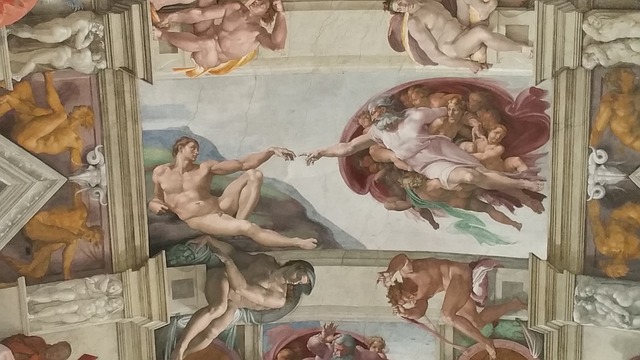Italy, the birthplace of the Renaissance, is home to some of the world’s most renowned museums, showcasing masterpieces from this pivotal period in art history.
If you’re an art lover or a history enthusiast, a tour of Italy’s top Renaissance museums is a journey through time, offering a glimpse into the minds of the geniuses who shaped the era.
Here are the most popular museums in Italy where you can immerse yourself in Renaissance art and culture.
1. The Uffizi Gallery, Florence
The Uffizi Gallery is arguably the most famous museum in Italy for Renaissance art. Located in Florence, the cradle of the Renaissance, the Uffizi houses an unparalleled collection of masterpieces by artists such as Leonardo da Vinci, Michelangelo, and Raphael.
Highlights:
- Botticelli’s “The Birth of Venus”: One of the most iconic images of the Renaissance, depicting the goddess Venus emerging from the sea.
- Leonardo da Vinci’s “Annunciation”: A stunning example of da Vinci’s early work.
- Michelangelo’s “Doni Tondo”: A rare circular painting by the master, featuring the Holy Family.
Visitor Tips:
- Book Tickets in Advance: The Uffizi is extremely popular, so reserving tickets online is highly recommended to avoid long lines.
- Join a Guided Tour: To gain deeper insights into the artworks, consider joining a guided tour.
2. The Vatican Museums, Vatican City
The Vatican Museums are home to one of the most extensive and significant art collections in the world, including a wealth of Renaissance masterpieces. The museums culminate in the Sistine Chapel, adorned with Michelangelo’s awe-inspiring frescoes.
Highlights:
- The Sistine Chapel Ceiling: Michelangelo’s frescoes, including “The Creation of Adam”, are a must-see.
- Raphael Rooms: Four rooms painted by Raphael and his workshop, with the “School of Athens” being a standout.
- Pinacoteca Vaticana: A gallery with works by Titian, Caravaggio, and Leonardo da Vinci.
Visitor Tips:
- Early Morning Access: Opt for early morning tickets to avoid the largest crowds.
- Combination Tickets: Consider a ticket that includes a visit to St. Peter’s Basilica.
3. The Accademia Gallery, Florence
The Accademia Gallery is best known as the home of Michelangelo’s “David”, but it also houses an impressive collection of other Renaissance artworks.
Highlights:
- Michelangelo’s “David”: This colossal statue is a symbol of Renaissance art and humanist ideals.
- “Prisoners” or “Slaves”: Unfinished sculptures by Michelangelo, offering insight into his creative process.
- Renaissance Paintings: Works by artists such as Sandro Botticelli, Domenico Ghirlandaio, and Paolo Uccello.
Visitor Tips:
- Timed Entry: Book a timed entry ticket to avoid waiting in long lines.
- Guided Tours: Enhance your visit with a guided tour to learn more about Michelangelo and the Renaissance era.
4. The Bargello Museum, Florence
The Bargello Museum, housed in a former medieval prison, is a treasure trove of Renaissance sculpture. It features works by Donatello, Michelangelo, and other masters.
Highlights:
- Donatello’s “David”: The first freestanding nude statue since antiquity, revolutionary in its time.
- Michelangelo’s “Bacchus”: A youthful depiction of the god of wine, showcasing Michelangelo’s early style.
- “Pisanello’s Medals”: An exquisite collection of Renaissance medals and small sculptures.
Visitor Tips:
- Explore the Courtyard: The museum’s courtyard is a beautiful spot, often overlooked by visitors.
- Combination Tickets: Consider a ticket that also includes access to other Florentine museums.
5. The Gallerie dell’Accademia, Venice
The Gallerie dell’Accademia in Venice is renowned for its collection of Venetian Renaissance art. It’s a must-visit for those interested in works by Bellini, Titian, and Veronese.
Highlights:
- Leonardo da Vinci’s “Vitruvian Man”: Though rarely on display due to its fragility, this iconic drawing is part of the museum’s collection.
- Giorgione’s “The Tempest”: A mysterious and evocative painting that continues to intrigue art historians.
- Titian’s “Presentation of the Virgin”: A large and dramatic work showcasing Titian’s mastery of color and composition.
Visitor Tips:
- Check for Special Exhibitions: The museum often hosts special exhibitions that provide additional context to its permanent collection.
- Guided Tours: Consider a guided tour to gain deeper insights into Venetian Renaissance art.
6. The Pinacoteca di Brera, Milan
The Pinacoteca di Brera is Milan’s premier art gallery, housing an exceptional collection of Renaissance masterpieces.
Highlights:
- Raphael’s “The Marriage of the Virgin”: A stunning example of Raphael’s early work, notable for its composition and use of perspective.
- Caravaggio’s “Supper at Emmaus”: A dramatic depiction of a biblical scene, highlighting Caravaggio’s mastery of light and shadow.
- Piero della Francesca’s “Brera Madonna”: A serene and highly detailed altarpiece, showcasing the artist’s skill in creating depth and realism.
Visitor Tips:
- Combined Tickets: Consider purchasing a combined ticket that includes access to other cultural sites in Milan.
- Audio Guides: Rent an audio guide to enrich your understanding of the artworks and their historical context.
Conclusion
Italy’s museums are a testament to the country’s rich cultural heritage and its pivotal role in the Renaissance. From Florence’s Uffizi Gallery to the Vatican Museums, each institution offers a unique and profound experience for art lovers and history enthusiasts alike.
Whether you’re admiring Michelangelo’s “David” or exploring the frescoes of the Sistine Chapel, Italy’s Renaissance museums provide a journey through some of the most significant artistic achievements in history.
So, pack your bags and prepare to be mesmerized by the timeless beauty and grandeur of Renaissance art in Italy.
Here’s a useful travel guide for budget travelers to save big on their Italy vacation for exploring the renaissance art of Italy. Read now: How to Sightsee Italy in 7 Days Without Breaking the Bank?
Looking for the lowest fares on transatlantic flights from your home destination? The interactive Flight Map below can help you find the best flights for your preferred flight route. Book flights now.
Flight Map:
Join for free
Stay in the loop with everything you need to know.


